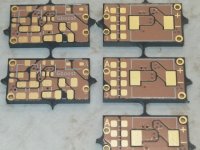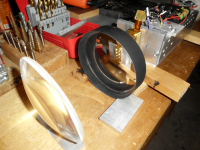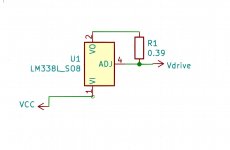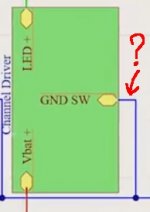- Joined
- Feb 25, 2009
- Messages
- 169
- Points
- 18
Okay, so I haven't posted at all for over a year, because of more pressing real life issues. I didn't even have the time to conclude my 7W build, on which I was working last year. Recently I've wondered what had changed in the laser hobby in one year, and as soon as I hit Google with the proper inquiry, I was in for a HUGE surprise. I'm talking about Styropyro's video about the NUBM31T diode array. That thing is a beast!
The idea of having a 95W diode array is really exciting, so, has anyone here experimented with it? What kind of battery does it require? I noticed several arrays for sale on Ebay, all with the same driver. Is that appropriate to reach full power? I'm asking because Styropyro did not use it, and instead he made his own.
The cooling method used by Styropyro has left me... a little perplexed. A hunk of aluminum isn't really an efficient way of dissipating heat (otherwise, CPUs would not require complicated heat sinks), but I understand he was doing that mainly for show and for the challenge of fitting that big array into a relatively small host. If I were to make such a build, I'd use a CPU heat sink to cool it.
Last but not least, the most important aspect about any build: safety. I suspect that my OD4 Eagle Pair glasses, which I used with my 3W Dominator (remember Blord?) wouldn't be up to the task to protect my eyes against the diffused light of a NUBM31T array. What kind of glasses would you suggest?
The idea of having a 95W diode array is really exciting, so, has anyone here experimented with it? What kind of battery does it require? I noticed several arrays for sale on Ebay, all with the same driver. Is that appropriate to reach full power? I'm asking because Styropyro did not use it, and instead he made his own.
The cooling method used by Styropyro has left me... a little perplexed. A hunk of aluminum isn't really an efficient way of dissipating heat (otherwise, CPUs would not require complicated heat sinks), but I understand he was doing that mainly for show and for the challenge of fitting that big array into a relatively small host. If I were to make such a build, I'd use a CPU heat sink to cool it.
Last but not least, the most important aspect about any build: safety. I suspect that my OD4 Eagle Pair glasses, which I used with my 3W Dominator (remember Blord?) wouldn't be up to the task to protect my eyes against the diffused light of a NUBM31T array. What kind of glasses would you suggest?







